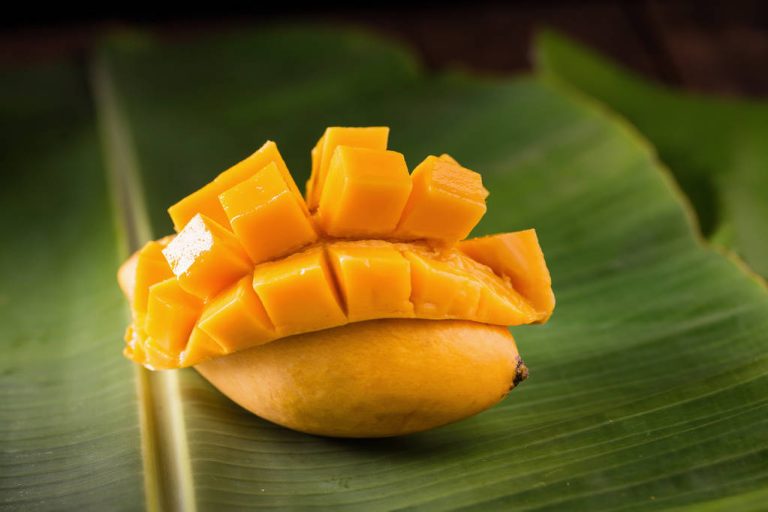Mangoes can be peeled very easily with a few tricks. We show you three simple variants for different serving or eating options.

1. Peel mangoes with glass
In order for your mango to be easy to peel, it should be really ready to eat. This is especially true for this method of peeling mangoes. If the mango is well ripened, it has a red-yellow skin with a few green spots and can be easily pressed in with a finger.
Since the mango fruit is a tropical plant and usually has to travel long distances before it reaches our stores, you should rarely treat yourself to it. When buying, make sure that the mangoes come from southern Europe if possible and go to a shop near you to avoid additional transport routes.
And this is how you peel mangoes with a water glass:
Cut off both sides of your mango along the pit, which is a narrow disc in the middle. When you get to the core with the knife, just change direction a bit.
Pull the two cut halves over the rim of a glass. Press the rim of the glass between the skin and the flesh to detach the mango half from the skin.
What remains is the narrow core, which you can now simply peel with a vegetable peeler and separate the remaining flesh from the core with a knife.
2. Peel uncut mangoes
You can also easily peel and eat uncut mangoes.
If you leave a small grip area on both sides, mangoes are easy to peel with a good vegetable peeler.
You can then simply use a knife to cut off the parts of the shell that you left out to hold.
With this method, however, it is a bit more difficult to cut the mango into small pieces afterwards, since the mango is very slippery without the skin.

3. Fillet the mangoes
Depending on how you want to serve the mango, you can also fillet it. You proceed in a similar way to an orange:
Cut off a small piece of the mango at the top and bottom so that the mango has a base and you have a starting point for cutting at the top.
Place the mango vertically on a cutting board, with the heavier and larger part at the bottom.
Now carefully separate the skin from the flesh in narrow strips. Then you can cut the pulp from the stone. The standing area is also very helpful here.

